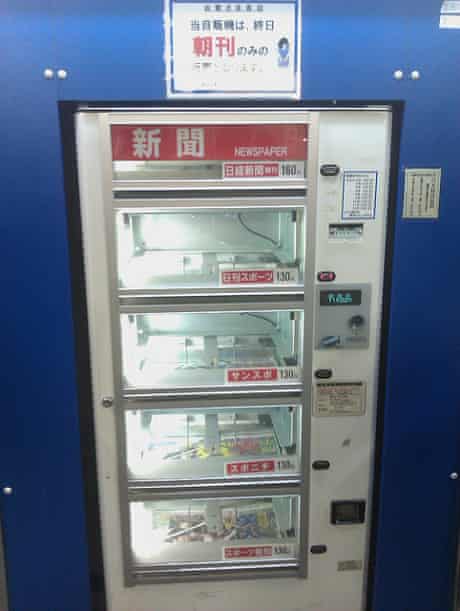
Print background
Japan is a highly literate society, with one of the world’s highest literacy rates at 99%. It’s also a society where its citizens make the considerable effort of learning the complex writing system.
Although no recent data is available, these stats from 2005 show that in terms of circulation, Japan has 8 papers in the global top 20, and ranks 4th in readership ratio and 3rd in newspaper circulation per country. Although print is in decline like in the rest of the world, the business model of subscription keeps figures strong. You can read the latest circulation figures in Japanese and in English.
The scope
Leaving aside one financial paper, two sport newspapers and the equivalent of the BBC, NHK, here are the top 3 general news national newspapers in Japan:
- Yomiuri Shimbun 14 million print circulation (website national rank 34)

- Asahi Shimbun 12 million print circulation (website national rank 50)

- Mainichi Shimbun 5.5 million print circulation (website national rank 77)

In contrast to this, the Guardian currently ranks 15th in Great Britain and 187th globally.
Five interesting features
1. Functional layouts
To Western audiences, accustomed to more art-directed and visually rich, interactive websites, these sites can appear to be quite spartan and text-driven.
However, this predominance of text over richer content is already present in their print versions, and there are other sectors which thrive in more creative, artistic or subtle designs – overall the Japanese feel perfectly comfortable with mostly text news information.
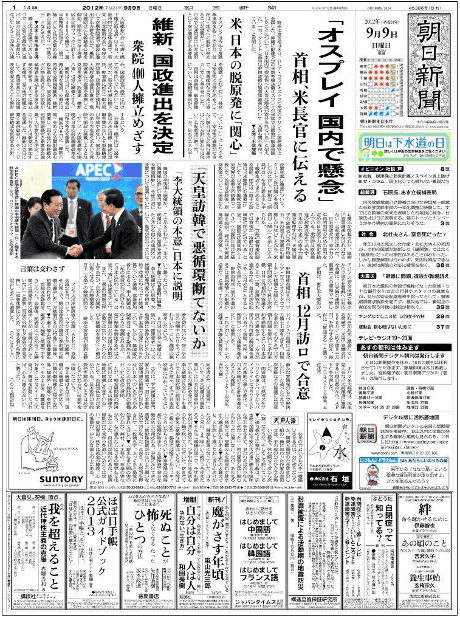
Japanese news sites predominantly carry only headlines, date of publication and an icon that marks the type of content. This allows for quick page loads and encourages quick jumping from page to page.
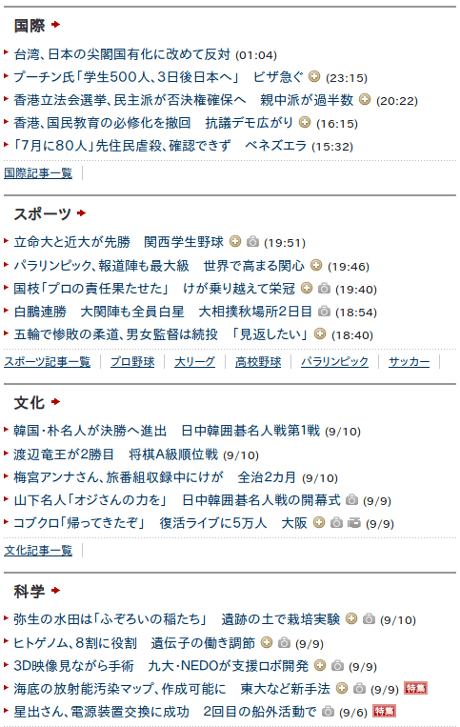
In contrast to this, the Guardian has 10 different types of content and the large size of the homepage accounts for a fair amount of all page impressions.
2. From WAP to app
Japan was a world leader in the development of the mobile platform under WAP, and these sites are clearly optimised for fast rendering in smaller screens for quickly jumping between links. All three papers have mobile optimised versions, and they also offer apps for mobile, tablet and Facebook, along with Kindle versions and special packages (included as bundles with some mobile operators), as well as having premium services.
If we pick one example per site:
- Yomiuri premium: a paying service with exclusive features like mobile alerts, scrapbook to read later, storing by news by keyword, exclusive offers to subscribers.
- Mainichi tap-i: an app with selected content laid out in a visually rich magazine-style layout for tablets and apps, on both iOS and Android platforms.
- Asahi this page details all of the different combinations of content and platform to choose from – they’re all paid-for, customised options.
As for the Guardian, it currently offers a mobile version, and a suite of apps from an iPad version to crossword apps across mobile platforms, as well as some apps for smart TVs.
3. Regional focus
Perhaps the feature I find most interesting is their emphasis on breakdown of news by region (Yomiuri, Asahi, Mainichi).
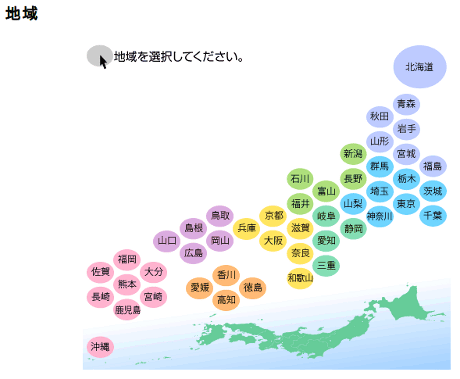
Just as the print newspapers have customised content and sections for each of Japan’s 47 prefectures, their websites feature a ‘region tab’ very prominently in the top menu which directs users to a map ‘chooser’ for the country.
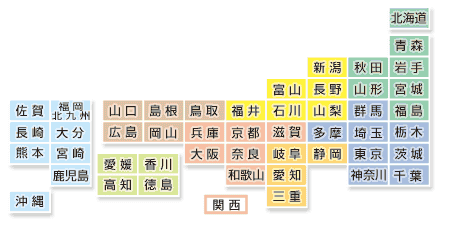
This seems like a good solution to manage local within a national scope and reflects the population’s trust in the media to keep them informed of the events in their everyday life.
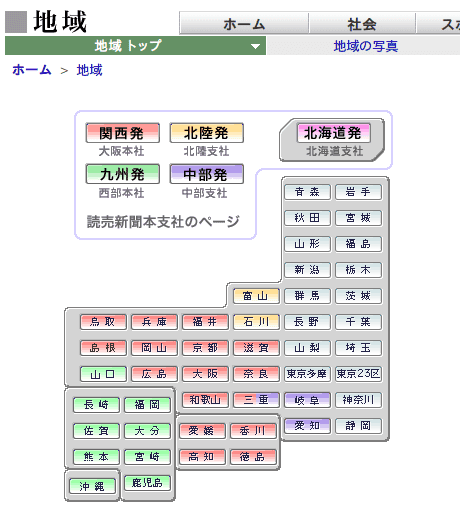
Moreover, they all offer a more concise, less cluttered version of their news in English for an international audience (Asahi, Mainichi and Yomiuri).
Recently, the Guardian experimented with hyperlocal sections and has some keywords for cities and counties.
4. Advertorials
A quite unique characteristic of Japanese websites is the greater mixture of sponsored and editorial content.
Sprinkled throughout the page and not confined to the now-increasingly invisible right hand column or the bottom of the page, they appear in the middle of the content, in between headlines and sometimes without special typography or colours to make them stand out from the editorial content, although many are marked with “PR”.

This is in line with Japanese society where it’s not rare to see, for instance, consecrated actors or singers advertising products as a launchpad for their latest artistic endeavours.
The Guardian has a promo column for commercial content and Google’s AdSense, as well as microsites for sponsored content and badges for sponsored sections or series.
5. The science bit
Although relatively up-to-date, these sites err on the side of caution:
- No HTML5 tags or features seem to be present
- URLs are alphanumeric and therefore SEO-poor
- jQuery is used for interactivity, although an older version (1.4)
- There are hardly any “interactives” to speak of.
- Social sharing and user registration exist, but they don’t seem to be given special prominence
- Scripts and stylesheets don’t seem to be merged together and they are placed at the top of the page
- The column layout is liquid, but not responsive at breakpoints.
The Mainich, which is the only one of the three that has been rebuilt and redesigned recently, is the more up-to-date, with HTML5 tags, jQuery 1.7, although no asynchronous or delayed loading of scripts, no spriting of icons, nor much dynamic AJAX functionality present in any of them.
In terms of page weight, although all three average one megabyte, interestingly Mainichi is the loser here, serving only around one tenth of its content from the browser cache.
In conclusion
Although many of the most recent innovations don’t seem to be present in the top three general news online Japanese media, maybe the fast load and the speed of Japanese networks means that those are not priorities for them.
As for multiplatform, they take a wide approach with the creation of native or web apps and special deals with other media and technology industries.
This reflects the current trend where news businesses are leaving the rigid framework of the website and their curators to be ubiquitous in a plethora of digital environments: social, tablet, TV, mobile, outdoor displays and who could tell where next.
Background image: Mituskoshi, 2004 Ⓒ Akira Yamaguchi.